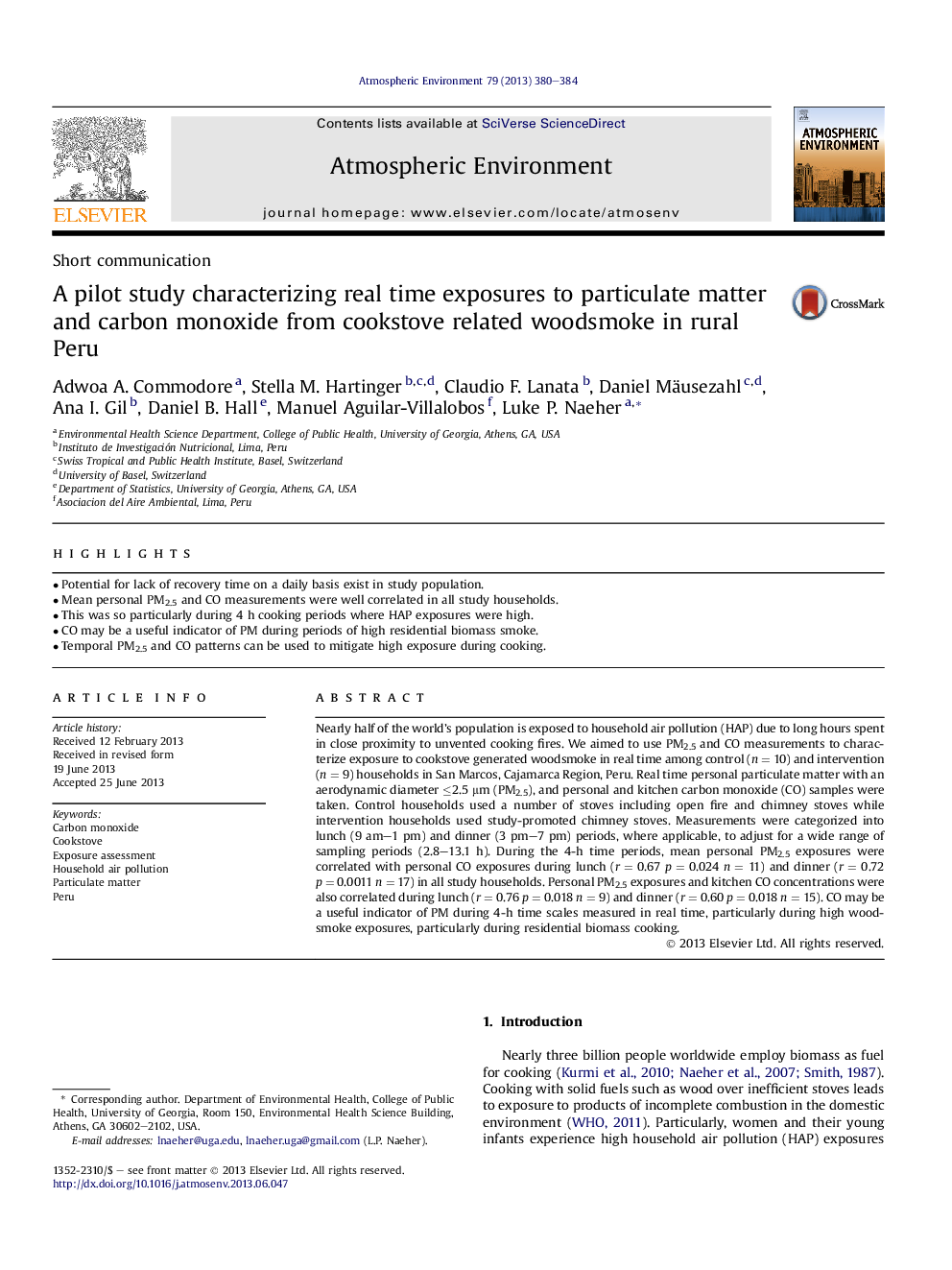| Article ID | Journal | Published Year | Pages | File Type |
|---|---|---|---|---|
| 6341619 | Atmospheric Environment | 2013 | 5 Pages |
Abstract
Nearly half of the world's population is exposed to household air pollution (HAP) due to long hours spent in close proximity to unvented cooking fires. We aimed to use PM2.5 and CO measurements to characterize exposure to cookstove generated woodsmoke in real time among control (n = 10) and intervention (n = 9) households in San Marcos, Cajamarca Region, Peru. Real time personal particulate matter with an aerodynamic diameter â¤2.5 μm (PM2.5), and personal and kitchen carbon monoxide (CO) samples were taken. Control households used a number of stoves including open fire and chimney stoves while intervention households used study-promoted chimney stoves. Measurements were categorized into lunch (9 am-1 pm) and dinner (3 pm-7 pm) periods, where applicable, to adjust for a wide range of sampling periods (2.8-13.1 h). During the 4-h time periods, mean personal PM2.5 exposures were correlated with personal CO exposures during lunch (r = 0.67 p = 0.024 n = 11) and dinner (r = 0.72 p = 0.0011 n = 17) in all study households. Personal PM2.5 exposures and kitchen CO concentrations were also correlated during lunch (r = 0.76 p = 0.018 n = 9) and dinner (r = 0.60 p = 0.018 n = 15). CO may be a useful indicator of PM during 4-h time scales measured in real time, particularly during high woodsmoke exposures, particularly during residential biomass cooking.
Related Topics
Physical Sciences and Engineering
Earth and Planetary Sciences
Atmospheric Science
Authors
Adwoa A. Commodore, Stella M. Hartinger, Claudio F. Lanata, Daniel Mäusezahl, Ana I. Gil, Daniel B. Hall, Manuel Aguilar-Villalobos, Luke P. Naeher,
